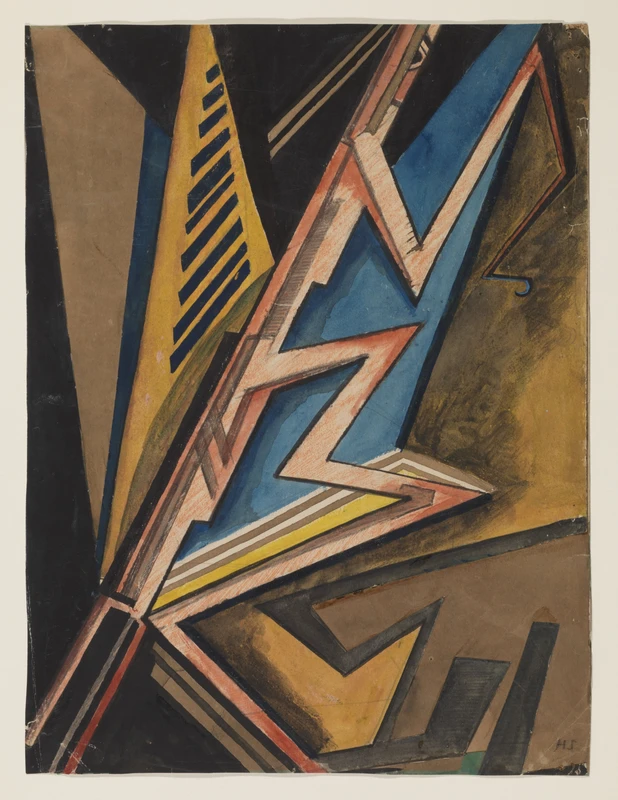Helen Saunders: Modernist Rebel
14 Oct 2022-29 Jan 2023


Pioneering artist Helen Saunders (1885–1963), one of the first British artists to pursue Abstraction whose work fell into obscurity for years, will be celebrated in a new exhibition in the Gilbert and Ildiko Butler Drawings Gallery at The Courtauld this autumn.
Helen Saunders was one of only two women to join the Vorticists, a radical but short-lived artistic movement that emerged in London on the eve of the First World War, whose members included Wyndham Lewis and Ezra Pound. Her extraordinary drawings, which reveal her gifts as a colourist and knack for complex literary allusion, captured the dynamism of modern urban life and the horrors of mechanised warfare. In the years that followed the war she turned her back on Vorticism, pursuing her own path and working in a more figurative style.
Due in part to Vorticism’s post-war fall from favour and to the minimising of her contributions, often by other male Vorticists, as well as the loss of almost all her paintings, Saunders fell into obscurity. Only in recent years has her work begun to be rediscovered and recognised as a vital piece in the story of British modern art.
Helen Saunders: Modernist Rebel will be the first monographic exhibition devoted to Helen Saunders in over 25 years. It will showcase a remarkable group of 18 of the artist’s drawings and watercolours, gifted in 2016 by her relative Brigid Peppin, which has transformed The Courtauld into the largest public collection of Saunders’s work in the world. The drawings trace her artistic development, from glimpses into her early period as an artist in the orbit of Roger Fry and the Bloomsbury Group, to a landmark group of six drawings from her Vorticist period, as well as landscapes created in L’Estaque in the south of France in the 1920s which reveal Saunders response to her environment and to the art of predecessors who had worked there earlier such as Paul Cézanne and Georges Braque.